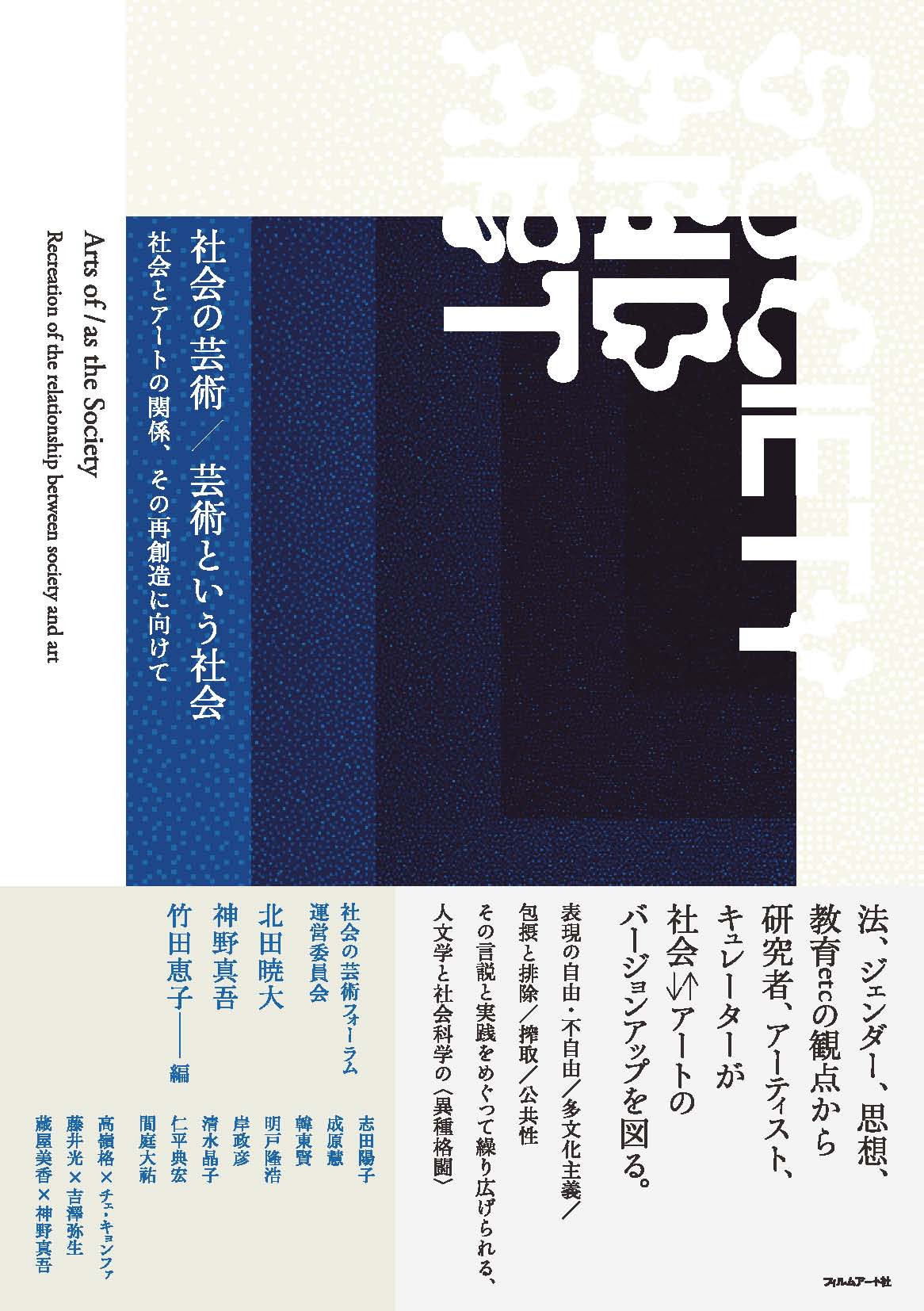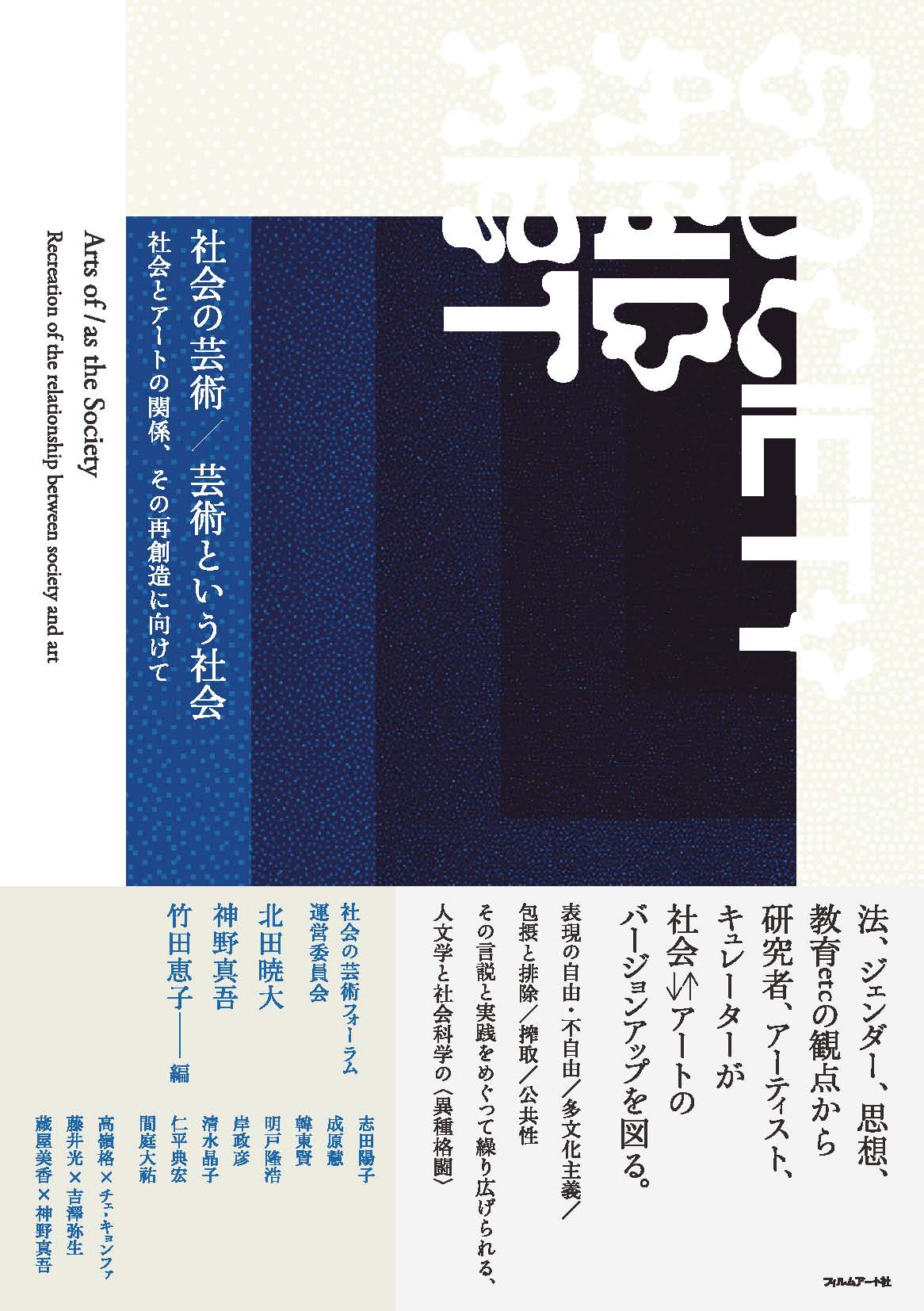
Title
Shakai No Geijutsu / Geijutsu to iu Shakai (Arts of/as the Society: Recreation of the Relationship Between Society and Art)
Size
352 pages, A5 format, softcover
Language
Japanese
Released
December 22, 2016
ISBN
978-4-8459-1609-2
Published by
Film Art Inc.
Book Info
See Book Availability at Library
Japanese Page
_Arts of/as Society_ may appear to adopt a slightly different approach to the topic of “Art” than many of the books written in Japanese in this field that can be found in bookshops and online. Rather than providing new insights into philosophical discussion on aesthetics, adding a new discovery to the previously known “history of art”, or analyzing or critiquing particular works of art, this book attempts to examine the institution of art in contemporary Japanese society, focusing on how it relates to and interacts with other institutions — or, to quote from the book’s preface by one of the editors, KITADA Akihiro, “to conduct an interdisciplinary examination of the way in which art and society reflect each other”.
This obviously does not imply that “art” and “society” are two independently distinct entities, the form of whose relations we could then analyze. Rather, the book’s intention is to explore the multilayered interconnectedness of these two categories by posing such questions as: what kinds of practices and commitments uphold the institution of art; how is it enabled and/or circumscribed by other social institutions; what are its functions in and effects on society as a whole?
To this end, the book adopts what Kitada calls a “mixed martial arts” approach. One form this approach takes can be seen in the fact that there are as many authors who would not be considered traditional residents of “the art world”— legal scholars, sociologists, feminist/queer theorists, and experts in ethnic studies — as artists, curators, and art critics. What demonstrates the “mixed martial arts” approach even further, however, is the construction of the book itself, with chapters titled “(Un/)Freedom of Expression”, “Multiculturalism”, “Social Inclusion and Exclusion”, “Exploitation”, and “The Public”.
Censorship and obscenity, representation of sexual/ethnic/racial minorities, gender and sexuality, labor and exploitation, or space of exhibitions, are issues that are still quite often regarded in Japanese society as secondary and marginal in discussions about “art”. By deliberately making these the central theme and topic of each respective chapter, however, the book asks whether these secondary and marginal issues might not be what surrounds the field of art and delineates it, in effect becoming the essential elements of “art” paradoxically by being driven out of its center.
The chapters demonstrate that it is precisely these fields where, in contemporary Japanese society, “art” encounters different institutions, becomes subject to criticism and judgement based on different principles, and affects/is affected by nonresidents of the “art world”. In other words, these are the fields where the matches of “mixed martial arts” are conducted. It is these fields, where “art” and “society” are truly inseparable, where “art” is explosively social and “society” is shot through with “art”, that _Arts of/as Society_ explores.
(Written by Akiko Shimizu, Professor, Graduate School of Arts and Sciences / 2017)



 Find a book
Find a book


